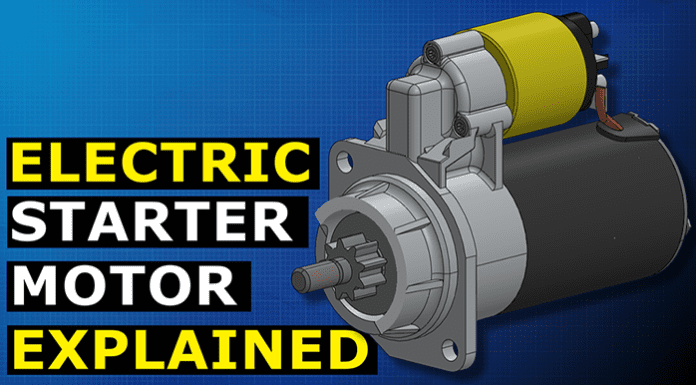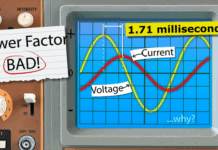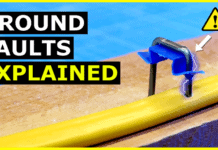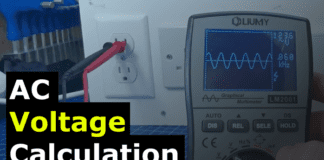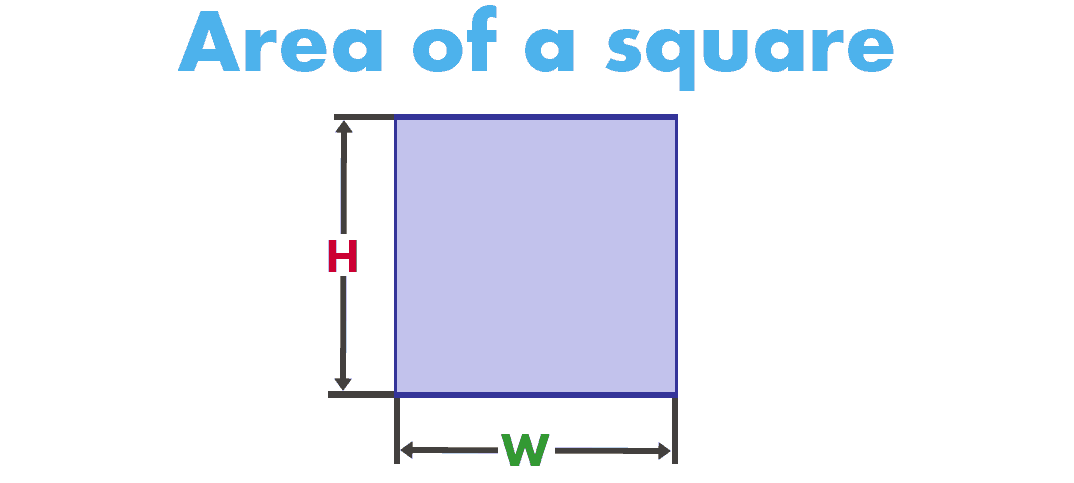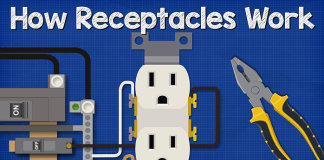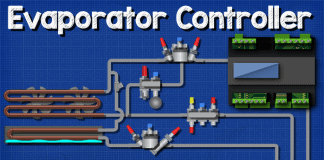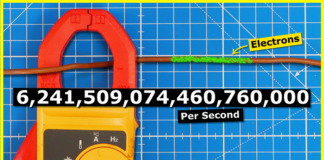Learn how starter motors work, where they are used and why they are essential for a car to start. We look at the main parts as well as how starter motors work how it turns the flywheel which starts the combustion process to start the car engine.
Scroll to the bottom to watch the YouTube tutorial
This is how cars used to start cranking the engine by hand, but now we just turn a key or press a button. That’s all possible because of the starter motor and I’ll show you how it works in this article, which is sponsored by Curiosity Stream. All our viewers can get a 25% discount by using the promo code “Engineering Mindset” you can get unlimited access to the world’s top documentaries for just $1.25 per month. Click HERE to learn more.
Starter Motors look something like this and we find them in combustion engine vehicles.
This is a relatively small but very powerful electric motor, which converts the electrical energy of the battery into mechanical energy. Have you ever started a car when the battery was dead, or do you have any tips for diagnosing a faulty starter motor? Let me know in the comments section down below.
So to start a car engine, we need to start the combustion process. We do that by moving the pistons.
The Pistons are connected to the crankshaft. In early cars we would basically connect a handle to the crankshaft and turn it by hand. This isn’t convenient, and it’s also a bit dangerous. On modern engines we find a flywheel connected at the rear, which has a number of teeth around its perimeter.
The starter motor is placed in close proximity to this, and when we start the car, it temporarily connects to the flywheel and forces it to rotate. This turns the crankshaft, which moves the Pistons and starts the combustion process. The starter motor then disconnects from the flywheel and the engine continues to run. As the pinion gear is very small in relation to the flywheel, it must rotate at a fairly high speed. It also requires a high torque to rotate the crankshaft.
The starter motor therefore draws a very large current from the battery when it starts. So once the engine is running, the alternator generates electricity and recharges the battery. We have covered how the alternator works in detail do check that out HERE. Let’s have a look at the main parts of the starter motor and then how it works.
On the top, we find the solenoid. This has some electrical connections on the back and a thick electrical wire running down into the main case, which houses the electrical motor. There’s a removable plate on the rear of the main case and we’ll look inside this in just a moment. Then we find the drive end frame, which holds everything together and allows the motor to be mounted to the car. At the very front it has a shield partially covering the pinion gear.
Looking inside the device, we see the shaft runs the entire length of the starter motor. Attached to the shaft is the rotor, often called the armature. This rotates with the shaft. This has a number of channels cut into it with coils of thick enamelled wire inserted into each of the channels. The ends of the wires connect to the commutated plates.
These are segments of copper which are separated and insulated from each other and spaced out around the circumference of the rotor. At the end of the motor, we find some springloaded brushes, which push against the Commutator plates. These will slide across the Commutator plates and they will allow electricity to flow through the coils of wire in the rotor surrounding the rotor and attached to the case are some permanent magnets. These form the stator. Some models of starter motor will use field windings, which are simply coils of wire that, when powered, will generate an electromagnetic field.
These essentially do the same job. It’s just that the field windings use a different, slightly more complex design, which can genuinely produce a more powerful magnetic field. When electricity is allowed to flow to the rotor, it flows through the brush and then through the coil to the opposite brush and then return to the battery via the frame of the car. When the current flows through a wire, it generates an electromagnetic field. We know that magnets interact to push and pull each other so the rotor’s electromagnetic field is repulsed by the stator’s magnetic field.
The gaps in the Commutator mean the magnetic field keeps resetting so the rotor is never able to align, but the rotor keeps trying, so we get a constant rotation. There are usually two pairs of brushes and multiple commutated plates, which are activated at the same time. This ensures a strong magnetic field and a smooth rotation. The thick electrical wire runs from the brushes and up to the solenoid. Inside the solenoid, we have an iron piston which can move backwards and forwards.
This is surrounded by a solenoid coil, which is just a coil of enamelled wire. When the solenoid coil is energised, it will generate an electromagnetic field and attract the iron piston, pulling it backwards between the solenoid and the end of the piston, we find a return spring. This allows the piston to return to its original position. When the solenoid is deenergised, the rear end of the piston has a conductive metal plate. As the piston moves back, it eventually comes into contact with the main electrical terminals mounted on the rear of the solenoid.
Once it makes this connection, a very large electrical current will rush into the brushes and power the motor. When the coil is deenergized, it will cut the power to the motor. Also, the front end of the piston connects to a lever. When the piston moves backwards and forwards, it will cause this to pivot. The lever is connected to the drive sleeve.
An overrunning clutch sits just ahead of this. The pinion gear is then attached to this at the front of the shaft. The overrunning clutch protects the electrical motor. Inside the clutch are a number of rollers with Springs which can move back and forth in a tapered notch. When the pinion starts to turn, the rollers move to the end of their Chambers and wedge in between the pinion gear, locking it into place.
This allows it to rotate the flywheel. After a short time. The combustion of the engine causes the flywheel to rotate faster than the pinion gear, and this unlocks the rollers, allowing the pinion to rotate freely. Otherwise, the starter motor could burn out. The overrunning clutch rides along a spline on the shaft.
This allows the pinion gear to slightly rotate, which locks the rollers and allows it to slide easily into the flywheel. Some starter Motors also use a planetary gear between the electrical motor and the shaft. This simply increases the torque further, but we won’t go into detail on that in this article.
So let’s learn how all these parts work together. And don’t forget, with our 25% CuriosityStream Discount code, you can get unlimited access to all these documentaries and much more right now for any 14 point 99 per year. That’s just $1.25 per month. Personally, I really enjoy this series on Engineering the Future, and I’m sure you will also so check it out HERE and use promo Code Engineering Mindset to get 25% off. When the ignition key is turned, it causes a small current of electricity to flow into the solenoid coil.
The solenoid is usually made of two coils known as the pulling coil and the holding coil. The end of the holding coil connects to the casing of the starter motor, so the current returns to the battery via the frame of the car. The pulling coil is connected to the main output terminal. Both coils are energised to create a strong magnetic field. This pulls the piston back and as the contactor plate connects across the main terminals, both ends of the pulling coil will become the same voltage.
There will be no voltage difference across this coil at that point in time, so the coil will turn off because there’s no current flowing through it. It takes far less energy to hold the piston in position, so the holding coil continues to run. As the piston moves back, it’s going to pull on the lever. This pivots and transfers the motion to the drive sleeve, pushing it forwards. As it moves forwards, it slightly rotates the pinion, allowing it to lock the rollers in the clutch and slide the pinion into the flywheel.
As the contactor plate connects across the terminals and turns the pull in coil off, a very large current will now flow through the contactor plate through the thick wire and into the brushes. From here it flows to the Commutator plates and through the coil, then back to another Commutator plate and through another brush, which is grounded to the frame of the car, so the current returns to the battery. The coil produces an electromagnetic field which interacts with the permanent magnet or field winding in the stator. This interaction causes the rotor or armature to rotate very fast and with a high torque, the rotor transfers this through the shaft through the clutch and into the pinion gear, which turns the flywheel. As the flywheel starts the combustion process, the engine will eventually begin to rotate the flywheel faster than the starter motor.
This unlocks the overrunning clutch so the pinion gear spins freely. When the key is released, it cuts the power to the solenoid coil, which releases the piston. The spring pushes the lever back, removing the pinion gear from the flywheel, the current is cut through the starter motor. The combustion engine continues to run by itself and the alternator recharges the battery. We have also covered how the car battery works in detail previously, check it out HERE.

